Petals in the Patch
companion planting for your vegetables
You may wonder why many vegetable plots seem to feature plenty of plants that clearly are not vegetables- is this just for colour? In general the answer is no (although that is of course a side benefit!). Vegetable growers include a range of other plants with the aim of improving their veg crops in a number of ways:
1) Improve pollination rates (and therefore crop yields)
2) Reduce pests to the vegetables.
3) Improve soil or conditions for the vegetables..
4) …or work by witchery (old wives tales that work….and some that may not!)
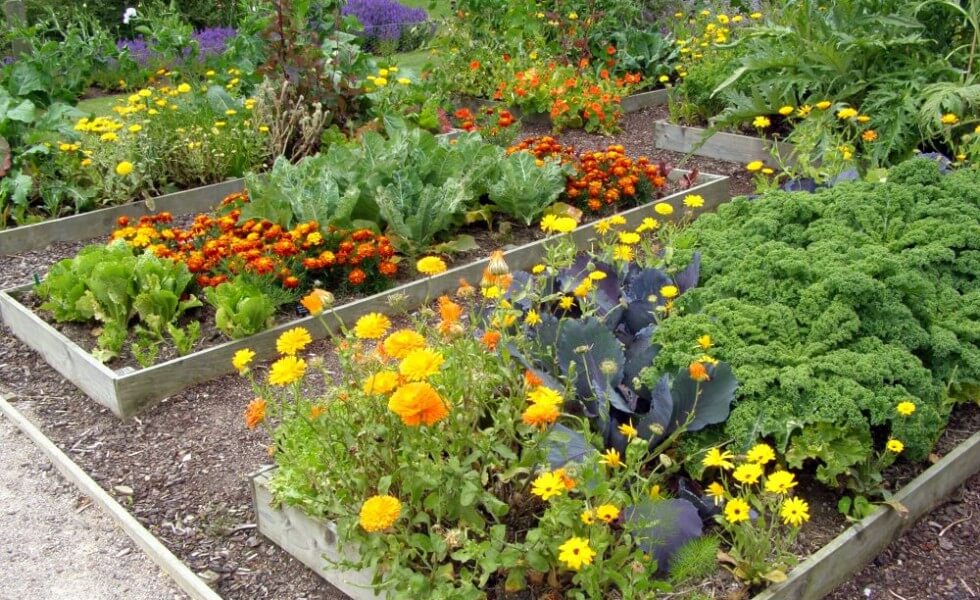
Pollination
Bringing pollinators in a key part of choosing planting companions. Most vegetables will benefit from plentiful pollinators at the right time, but squashes in particular work better with some good flowering plants around. Flowering herbs are a good choice as these are then useful too, but most of the other species mentioned below are also good for this purpose.
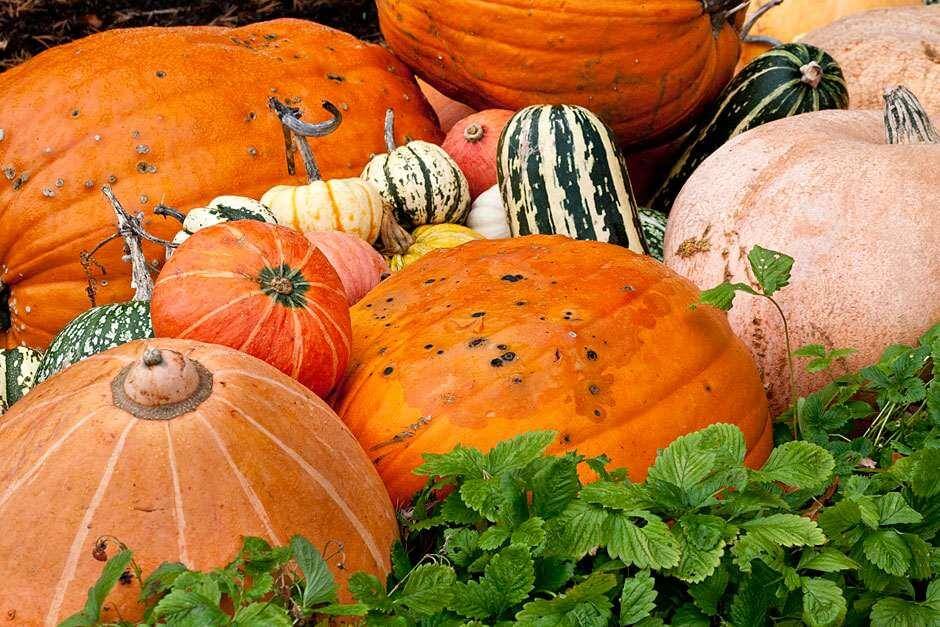
Borage definitely is one of the best plants for attracting bees. Whilst it’s a bit thuggish, I love the flowers so always try to make space for it.

Pest reduction
Pests can be confused or repelled with strong scents. They can also be reduced by attracting more beneficial insects that eat them.
All varieties of lavender (cotton lavender or Santolina too) parsley, thyme and geraniums are thought to be beneficial on both dimensions.
Calendula (Calendula officinalis or “pot marigold”) is a delightful pop of orange flower and has a wide range of beneficial properties. It attracts pollinators and deters nematodes in the garden, as well as being useful in various medicinal and beauty products. Calendula also exudes a sap that traps aphids, and this in turn attracts ladybirds. Ladybirds are beneficial not only in eating aphids but a host of other pests. Calendula is therefore often paired with broccoli and other brassicas which are prone to aphid attack. I also love the colour combination!
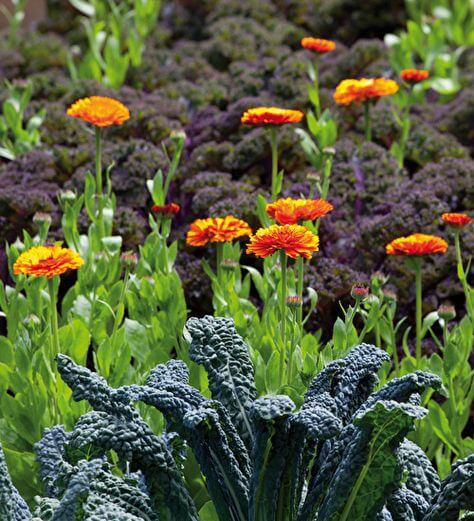
Swiss chard and other greens are prone to aphids. Hover flies eat aphids. Attract the hover flies with Sweet Alyssum, and you reduce the aphids- magic recipe!
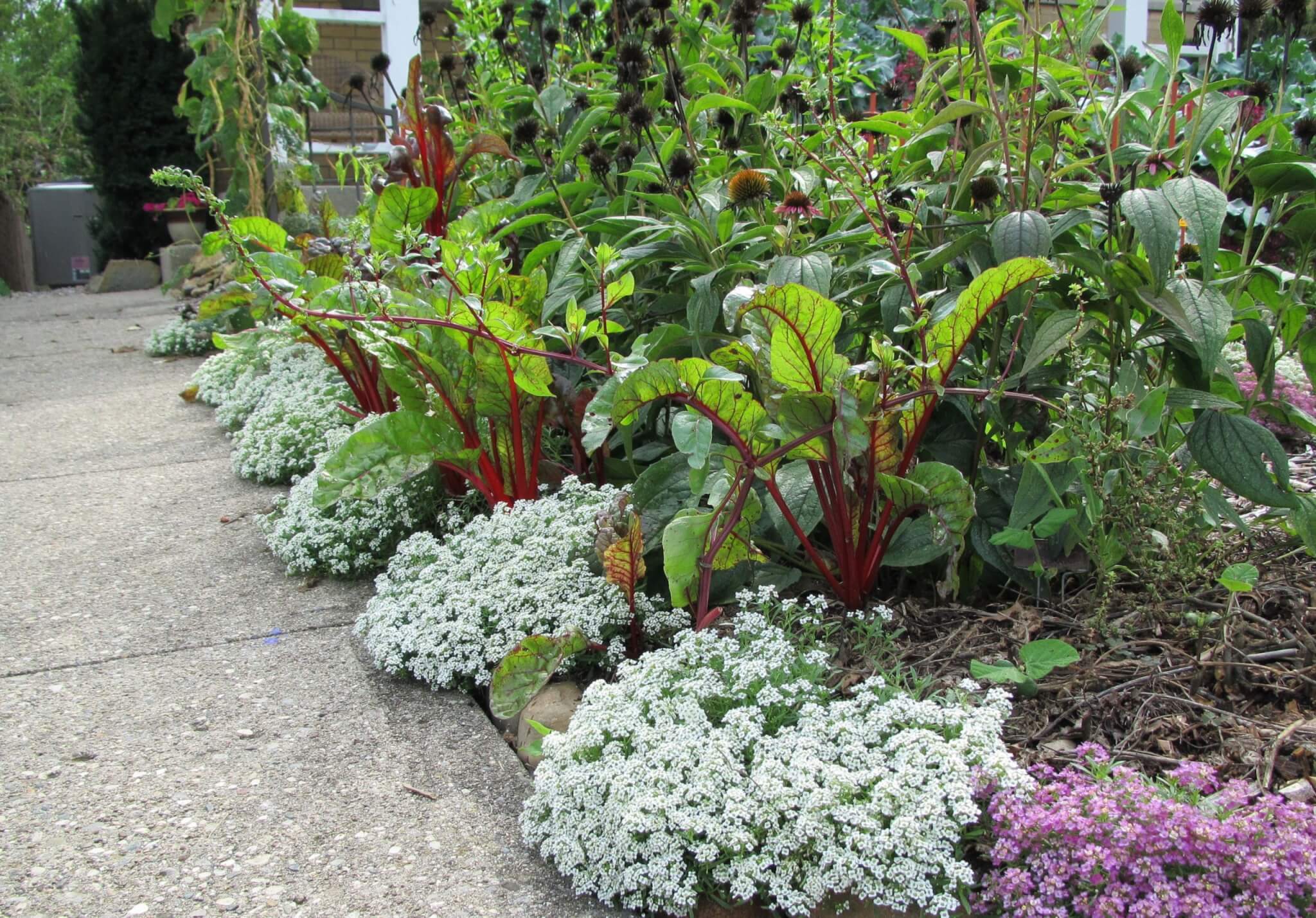
Nasturtiums are widely thought to repel pests with their scent, (and they do have a certain pungence!). I can remember my grandfather growing them with courgette and cucumber for this reason, and he certainly grew great courgettes. Nasturtium leaves are also edible, and make a great pesto so courgette, nasturtium leaf, tomato and nasturtium pesto salad is a wonderful allotment dish. Another tasty one is pictured below-courgette ribbon salad with hebs and nasturtiums (from a selection from the good people at Good Eatings- see here)
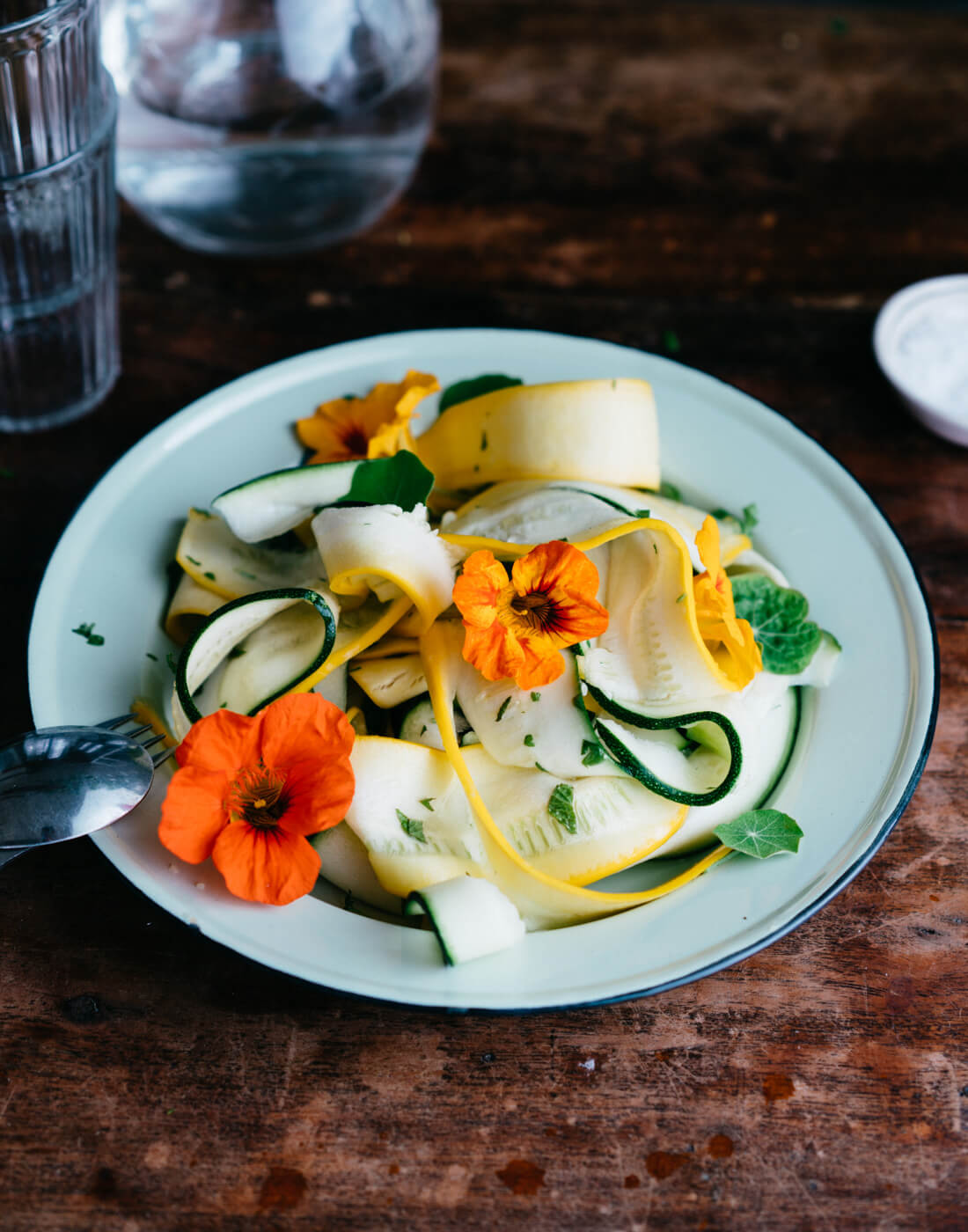
Marigolds deter Mexican Bean Beetles (which can be a huge problem- hence the prevalence of marigolds in veg gardens). The owner of the allotment pictured below did suggest he might have overdone the marigolds! Rosemary, Potatoes and Catnip are good alternatives if orange is not your thing.

Compatible habits
Other plant pairings work well because they have different habits or characteristics. Beans and peas are what are known as “nitrogen fixers” which means they improve the nitrogen content in the soil around them to the benefit of many other plants. Letting them scramble up formal or informal trellis, towers, or fencing not only looks good but is very effective in improving the surrounding planting.
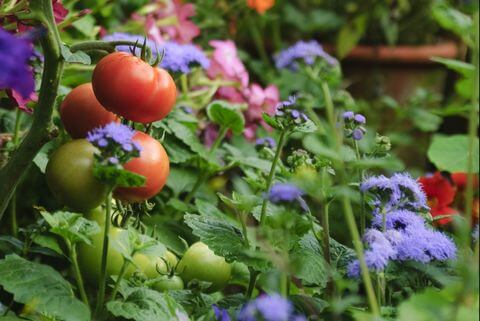
Some pairings are structural- lettuce are low growing and don’t like the heat, tomatoes like sun and grow taller -so this is a match made in heaven. Successional planting is also worth considering. Plant vegetables that will be done and dusted early enough for a later crop to be planted. Good early crops include French beans, many salads, early potatoes and carrots, onions, garlic, and beets.
Planting carrots and radishes together works well as they take up nutrients from different parts of the soil. Carrots grow deeper and take longer over it- radishes mature fast and shallow.
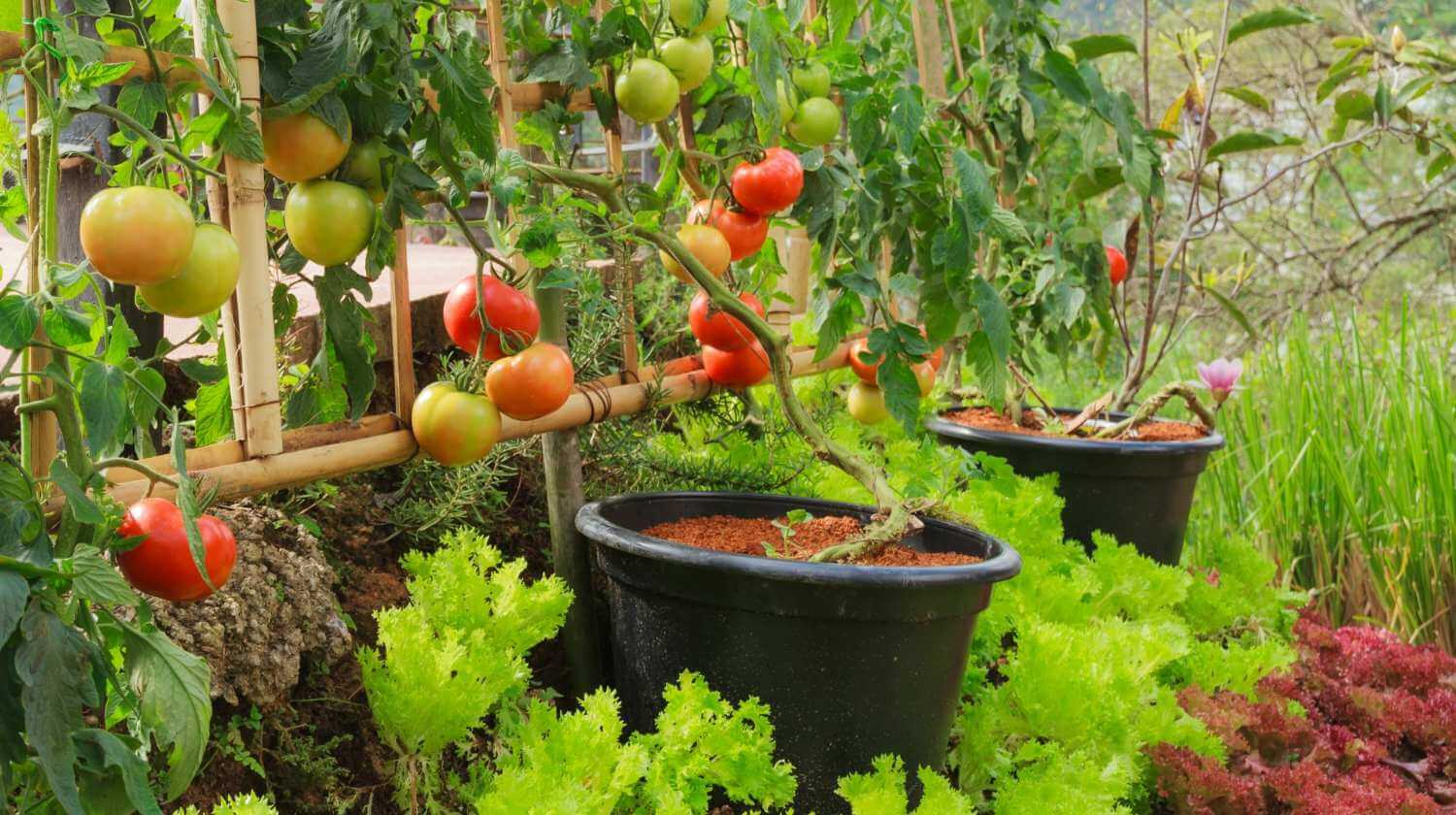
Witchery and Old Wives Tales
Whilst beans go well with many other plants, they do not seem to do well when grown near onions. Dill and carrots also don’t work well together, but tomatoes and basil do. I am not sure anyone knows why….do let me know if you do!
Best not to plant several brassicas together as they are all susceptible to the same pests. Best to split up and grow with Marigolds or other good companions.
Away from the vegetable patch… but on the same theme, many people believe that roses seem to be more sweetly scented and less prone to disease when surrounded by garlic. This seems to work with almost any member of the Allium or onion family, including decorative Alliums, as well as Chives and Leeks.

And some real old wives tales
….I am not sure I have tried any of these but would love to hear what you think!
- Plant lavender at your front gate for good luck.
- If you blow a dandelion puff and all of the seeds blow away, your wish will come true.
- Plant squash in May, they run away. Plant squash in June, there will be plenty soon.
- Plant cucumbers on the 6th of July, you will have cucumbers wet or dry.
- Beat your tomato plants with a broom, they will produce best when they are stressed.
- Never plant anything on the 31st of any month.
- If marigolds are bedded among cabbages and other brassicas, whitefly will move to another garden.
- Before planting peas, line the trench with holly leaves to prevent field mice.
- Never plant when the moon is full, light nights bring light crops.
- Harvest all root crops when the moon is growing old and they will keep better and longer.
- If you can find a pregnant woman to plant your garden, everything will thrive.
And now what to do…..
If you have any comments, questions or additions we would love to hear from you- click here.
We will do our best to answer within 24 hours, and will update here with answers that will be of broader interest. If you are in the mood to think about how to structure your garden (and where to put your vegetables!) you might also want to look at some of our gardens here , or pick up the phone or email us here